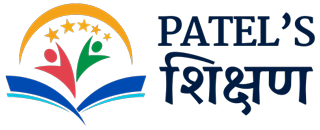What is Matter?
Look around you.
The chair you sit on, the water you drink, the air you breathe, even you—everything is made of matter.
Matter is anything that has mass and takes up space.
A book on your desk is matter.
The juice in your glass is matter.
Even invisible air is matter because it has weight and takes up space.
So, matter is all around us!
But what is it made of?
That’s the exciting part we’ll discover today.
The Constituents of Matter: Building Blocks of the Universe
Matter is not just one thing.
It is made of tiny particles.
Imagine Lego blocks—you can build cars, houses, or even castles with them.
In the same way, nature uses atoms and molecules to build everything around us.
Let’s understand this step by step.
Particles of Matter
Matter is made up of very tiny particles that are so small we can’t see them with our eyes.
We need special microscopes to see them.
Features of Particles of Matter
They are very tiny.
Example: A small grain of salt contains millions of tiny particles called atoms.
They are constantly moving.
Example: If you put a drop of ink in water, the ink slowly spreads everywhere.
This happens because the tiny particles are always moving and mixing.
There is space between them.
Example: When you put sugar in water, it disappears.
Actually, sugar fills up the empty spaces between water particles.
They attract each other.
Example: That’s why solids like stones are hard—they have strong attraction between their particles.
Atoms – The Smallest Building Blocks
Atoms are the basic units of matter.
Think of them like small Lego pieces.
An atom is the smallest particle of matter that cannot be divided further in normal ways.
Everything—air, water, plants, people, and even stars—are made of atoms.
Example:
A glass of water contains countless atoms of Hydrogen (H) and Oxygen (O).
The air we breathe has atoms of Nitrogen (N) and Oxygen (O).
Atoms are like letters in language.
Just as letters (A, B, C) combine to form words, atoms combine to form molecules.
Molecules – When Atoms Join Hands
When two or more atoms come together, they form a molecule.
Molecule = Two or more atoms joined together.
Examples:
Water (H₂O) = 2 atoms of Hydrogen + 1 atom of Oxygen.
Oxygen gas (O₂) = 2 atoms of Oxygen join to form one molecule.
Carbon dioxide (CO₂) = 1 atom of Carbon + 2 atoms of Oxygen.
So, molecules are like groups of friends holding hands to form something bigger.
Elements and Compounds
Matter can be of different types.
Let’s classify them.
Elements
An element is made up of only one kind of atom.
Example:
Gold (Au) – only gold atoms.
Oxygen (O₂) – only oxygen atoms.
Iron (Fe) – only iron atoms.
There are about 118 known elements in the world.
Compounds
Compounds are made when two or more elements combine in fixed amounts.
Example:
Water (H₂O) = Hydrogen + Oxygen.
Salt (NaCl) = Sodium + Chlorine.
Sugar = Carbon + Hydrogen + Oxygen.
Compounds are like recipes.
If you mix the ingredients in the right way, you get something new.
States of Matter
Matter can exist in different forms, called states.
The three main states are:
Solids
Fixed shape and fixed volume.
Particles are packed tightly.
Example: Ice, wood, a book.
Liquids
Fixed volume but no fixed shape.
Particles are less tightly packed and can move.
Example: Water, juice, milk.
Gases
No fixed shape and no fixed volume.
Particles are far apart and move freely.
Example: Oxygen, carbon dioxide, air.
Fun Example:
Ice (solid) melts into water (liquid).
Water can turn into steam (gas).
This shows how matter can change states.
Mixtures – When Substances Combine
Sometimes different types of matter mix together without forming a new substance.
This is called a mixture.
Types of Mixtures:
Homogeneous Mixture (looks the same everywhere)
Example: Salt dissolved in water.
Heterogeneous Mixture (different parts can be seen)
Example: Sand and pebbles.
Fun Activity: Mix sugar in water (it dissolves) vs. mix sand in water (it doesn’t dissolve).
Fun Facts About Matter
Your body is made of about 7 octillion atoms (that’s a 7 followed by 27 zeroes!)
Atoms are so tiny that a million atoms lined up in a row would be as thin as a hair strand.
The oxygen you breathe might have been part of a dinosaur millions of years ago.
Why Learning About Matter is Important?
Understanding matter helps us in daily life:
Knowing states of matter helps us understand cooking, freezing, or boiling.
Learning about molecules and compounds helps scientists make medicines.
Engineers use the knowledge of matter to build bridges, planes, and computers.
So, matter is not just science—it’s part of everything we do!
Conclusion
Matter is like the secret recipe of the universe.
From the smallest atom to the biggest mountain, everything is made of it.
Atoms are the smallest building blocks.
Molecules are atoms joined together.
Elements and compounds make up all substances.
Matter can exist as solid, liquid, or gas.
Mixtures combine substances in fun ways.
By unlocking the mysteries of matter, we understand the magic of science that surrounds us every day.
